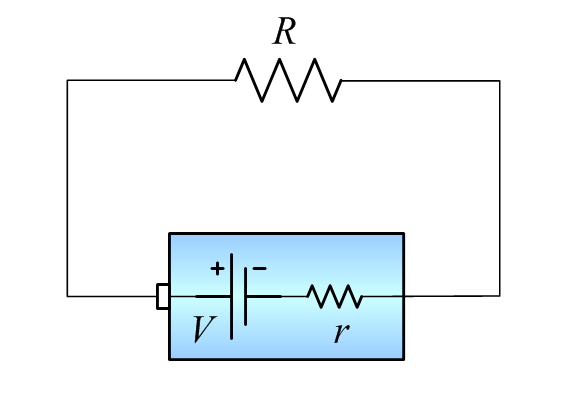Quiz:
There is a circuit with a battery and a resistor, R. The original voltage of the battery is V and it’s connected to an internal resistor, r.
If you want to maximize the power consumed in the resistor R, what should you do?
1. Use a larger resistance of R.
2. Use a smaller resistance of R.
3. Make R equal to r.
Answer:
The power dissipated in the external resistor is given by \(P = I^2 R\) in accordance with Ohm’s law.
The equivalent resistance of the circuit is \(R+r\) because of series connections. The current is calculated as \(I = V/R = \frac{V}{R+r}\).
Therefore, \(P = \frac{V^2 R}{(R+r)^2}\) — (1)
You can see when \(R \rightarrow 0\), the power will be zero; and when \(R \rightarrow \infty\), the power will also be zero.
So the choices of 1 and 2 above are not the right ones. The answer must be 3, but how do you prove it?
Let’s use a trick. That is \((R+r)^2 – (R-r)^2 = 4Rr\). So we can have
\((R+r)^2 = 4Rr + (R-r)^2 \)
to plug in (1). The, just keep on calculating until you get something meaningful.
Now, you can notice when \(R = r\), you will get the maximum power, \(\frac{V^2 }{4r}\)
